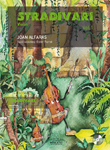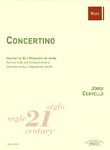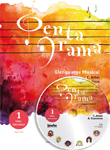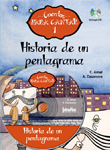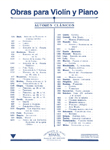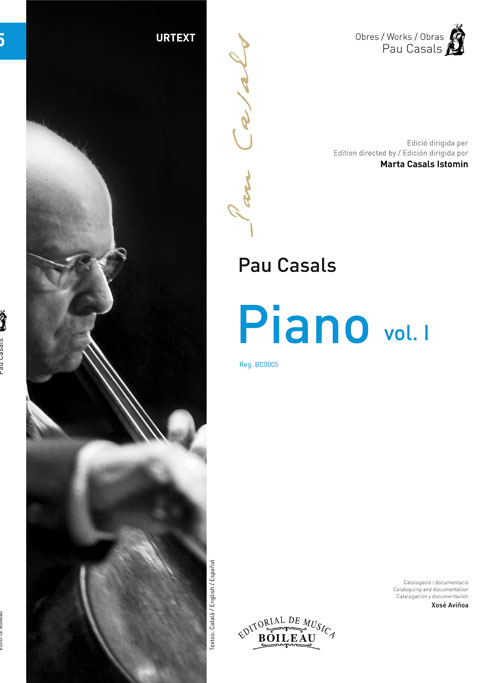Piano, Vol. 1
Piano
CASALS, Pau; CASALS, PabloReg.: BC0005
23,70 €
P.V.P. (VAT included 4%)
Add to cart
- Review: CASALS ISTOMIN, Marta
- Ensemble: Solo.
- Genres: Classical / contemporary: Solos.
- Language of the comment: Català/English/Castellano
- Product format: Partitura
- Difficulty level: Intermediate
- Period: Romanticism
- Publishing house: Editorial Boileau
- Collection: Pau Casals
- No. of pages: 72
- Measure: 31,00 x 23,00 cm
- Lenght: 35'00"
- ISBN: 978-84-8020-906-9
- ISMN: 979-0-3503-0851-2
- Available in digital: No
- Available for rent: No
Despite a strong vocation for the ‘cello, which he studied and began to play with a distinctive character, Pau Casals, like most ambitious, creative musicians, wrote at the piano and for the piano, as it is the ultimate teaching instrument, summarising the full vision of the creative process. Many creative musicians habitually worked at the piano, whether for this instrument alone or for piano accompanied by other solo instruments. To date, it has not been possible to document whether Casals had systematic training on this instrument, although at that time it was more common than it is today because, considering its qualities of timbre and combination, it was particularly attractive for creating test pieces and different kinds of compositions.
The first piano composition he wrote in his life was for a known person and a clear purpose: the wife of Guillermo Morphy y Ferriz de Guzmán (Madrid, 1836-1899), known as Count Morphy, a distinguished character at court, a historian, a teacher, a composer of operas like Lizzie and, above all, a cultural adviser to Alfonso XII and the Queen Regent María Cristina. Thanks to his clear-sightedness and sense of patronage, future musicians, such as Bretón, Albéniz or Casals himself – precisely on Albéniz’s advice – received decisive support in their careers. Dedicating a work to his benefactor, even if it was a very early product for an instrument that was not his main one, was still a cordial detail towards his protector.
In general, Casals’ piano works contained in this first volume belong to a very early period for the composer and are not especially complex. Most of them are diverse in nature, almost salon music, appearing to be creative entertainments basically characterised by a tonal, transparent language with a widespread tendency to modulate to nearby keys used more as a momentary expressive resource than as a structural evolutionary process. They show a lack of systematic work on the instrument as well as the commonplaces of piano composition of their time. In some of these works, the piano thread breaks, giving the effect of an unfinished product; the occasional appearance of chords that are difficult or impossible to finger leads us to think of intentions closer to test pieces than to finished products for normal performance. But not all these piano works are circumstantial. Together with those of the salon music type there are some showing an incipient desire for greater commitment, such as, for example, the three “Preludios orgánicos” (Organic preludes), linked to one another and with pretensions to be a project.
I.A-1 Balada (Ballad)
Work in two parts, the first in F minor and D flat Major and in 3/4 time and the second in D Major in 6/8 time. The work is dominated by triplets, giving it a lively air and a colourful chromatic treatment. The original manuscript covers four pages and on it appears the dedication “A la Excma. Sra. Condesa de Morphy” (To the Right Honourable Lady, Countess Morphy), the wife of his benefactor Count Morphy. As is usual with the composer, it bears the completion date at the end of the manuscript “Madrid, 4 de octubre de 1893” (Madrid, 4 October 1893). The title, “Ballad”, could lead one to believe that it is a slow, contemplative work, but it needs to be performed with a lively air for a more comprehensible result.
I.A-2 Allegro in F sharp minor
A piano work in the key of F sharp minor, as its title indicates, and 2/4 time based on quaver triplets in the first part and in a very different 6/8 time in the second part. After this, it goes back to the first time, with a final cadenza. It covers six manuscript pages with a texture that appears to be a sketch for a vocal work or accompaniment by another instrument, corroborated by the existence of a blank stave throughout the work. At the end, the date “Madrid, 6 de octubre de 1893” (Madrid, 6 October 1893) appears. It is an early work, apparently merely ornamental, which sometimes shows chords that are impossible to play, with interesting elements to be developed, such as the initial theme, providing the spirit for the rest of the work.
I.A-3 Quatre romances sense paraules (Four romances without words)
Dedicated “A la Sra. Dolores de Alsina”, it contains four sections: the first, in A minor and 3/8 time, shows a lyrical character thanks to its evocative tone; the second, in F Mayor and in the same time, with the anotation “Tempo Giusto”, follows a clear melody with
a denser accompaniment; the third, in the key of A Major and 6/8 time, returns to lyricism and to the cantabile melody, and
the fourth, in F sharp minor and 4/4 time, under the indication “Moderato”, is narrative in nature. The manuscript consists of eight pages signed at the end with the indication “Madrid 1894”.
I.A-4 Primer preludi orgànic (First organic prelude)
Piano work in the key of C minor and 3/4 time, on three manuscript pages and with a more committed texture than other works of the same period. It bears the signature “20 de febrero 1895. Madrid” (20 February 1895. Madrid). Whether the title is intended to refer to the complex concept of the “organic” in music is not documented. Perhaps the key is in the Baroque air it shows, with many scales recalling Bach and giving rise to a dense work, more complex than most of its contemporaries.
I.A-5 Petita masurca (Little mazurka)
Dedicated “A mí querida amiga y distinguida concertista, srta. Ma. Luisa Ritter” (To my dear friend and distinguished concert performer, Miss María Luisa Ritter). It is a work on four manuscript pages in the key of F minor and 3/4 time, with an occasional chromatic treatment enriching the tonal range. It ends with the signature “Madrid, junio 1895” (Madrid, June 1895). It shows the repetitive structure and gracious air of the salon music genre, with a simple core and a certain complexity in the development of the work-
I.A-6 Instantánea (Instant)
Brief work of one manuscript page in the key of Fsharp Major and 2/4 time, with triplet designs making it, in fact, 6/8. At the end, the signature “Sans. Septiembre 1895” (Sans. September 1895) appears. The big chord treatment developed leads to a work of an improvised nature, as if it were a musical moment.
I.A-7 Segon preludi orgànic (Second organic prelude)
Written in the key of F minor and 4/4 time, it covers three manuscript pages. Simple in nature, it is more rigid than the first prelude and plays with the organ-like tremolo to construct a work with airs of a study. It ends with the signature “París. Noviembre 1895” (Paris. November 1895).
I.A-8 Pàgina íntima (Intimate page)
Brief work, whose manuscript consists of a page and a half, in the key of A flat Major and 4/4 time, with the indication “A Consuelito. Página íntima” (To Consuelito. Intimate page) and the indication “Muy agitado” (Very lively). It is a brief work of a certain textural complexity that concludes with the signature “12ss.16 January 1898 – Barcelona”.
I.A-9 Tercer preludi orgànic (Third organic prelude)
Work in C Major and 3/4 time longer than the other two works forming part of the series – eight manuscript pages. In its central part, it shows a texture of long values and intense scales leading one to think of a tonal interplay more suited to the organ, although it does not contain indications for this instrument. It ends with the signature “Barcelona, Julio 1898” (Barcelona, July 1898).
Balada (5'26")
Allegro en Fa sostenido menor (4'23")
Quatre romances sense paraules (8'00")
Primer preludi orgànic (3'35")
Petita masurca de saló (3'33")
Instantánea (0'52")
Segon preludi orgànic (1'53")
Pàgina íntima (1'24")
Tercer preludi orgànic (5'44")

